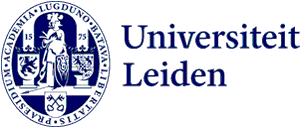
Students create creative language lessons for primary and secondary education: ‘Not enough attention paid to languages’
The earlier you introduce children to a language, the sooner they can be captivated by it and see that there is more than just Dutch and English. That is the basis for the language lessons for primary education that Alisa van de Haar, university lecturer of French, collaborated on. ‘Deans from different humanities faculties have said: we have to polish up the image of French and German.’
When pupils think of learning a language, they think of learning words by heart, but studying a language is different, says Van de Haar. ‘You conduct, for example, literature research and delve into linguistics and culture studies. With these curricula for pupils, we try to show that a language study programme is so much more than just a language course.’
‘Student assignment won’t disappear into a drawer
The curricula have been created by students. They got to work for both primary education (via Wetenschapsknooppunt Leiden) and secondary education (via Onderwijsnetwek Zuid-Holland). This way, they take work off the hands of teachers who are already very busy, says Van de Haar. And the students themselves also gain something from their university assignments. ‘Creating the curricula looks good on their CV and they have gained a nice publication. It is nice that the work that you have them do doesn’t disappear into a drawer, but that it is used.’
As coordinator of the faculty vaksteunpunt (support centre, ed.) for modern foreign languages, Van de Haar contacts schools about the curricula. Successfully, because the feedback so far has been positive and the curricula for primary education have already been requested by eleven schools. ‘They tell us that teachers are busy and that they do not have a lot of time to put together fun lessons. Now they can download ready-made curricula to use for their own lessons, and they can show that French literature is not only made up of Le Petit Prince, but that there is a whole world literature behind it. That is the goal of the vaksteunpunt: we have to do something about the reputation of languages.’
From song to painting: creative lessons
The students have found creative ways to showcase the breadth of the languages. For primary education, they used the seasons as a theme, and interpreted it in different ways. ‘One lesson includes a song, another discusses a painting, a calligramme is made: a poem where the form matches the content, such as a poem about rain in which the letters depict pouring rain. For the secondary education lessons, popular French rappers are presented as contemporary troubadours, while French literature from Canada and Senegal is also discussed.’
‘Not enough attention paid to languages’
The idea of curricula is not a new one. Similar initiatives have existed at the science faculties for much longer, but the vaksteunpunten at the humanities only started this spring. The current shortage of lecturers at language programmes such as Dutch, French, German and English is partly the reason for the faculty's renewed efforts to make languages better known in primary and secondary education, says Van de Haar. 'Germany and France are not only our neighbours but also our trading partners. Students with knowledge of the Francophone world and emerging economies such as in Africa, where French is also spoken, are very much in demand. The Netherlands is missing out on a lot of commercial and diplomatic opportunities because we are sidelined by not speaking the languages.’
Languages courses (in Dutch):
